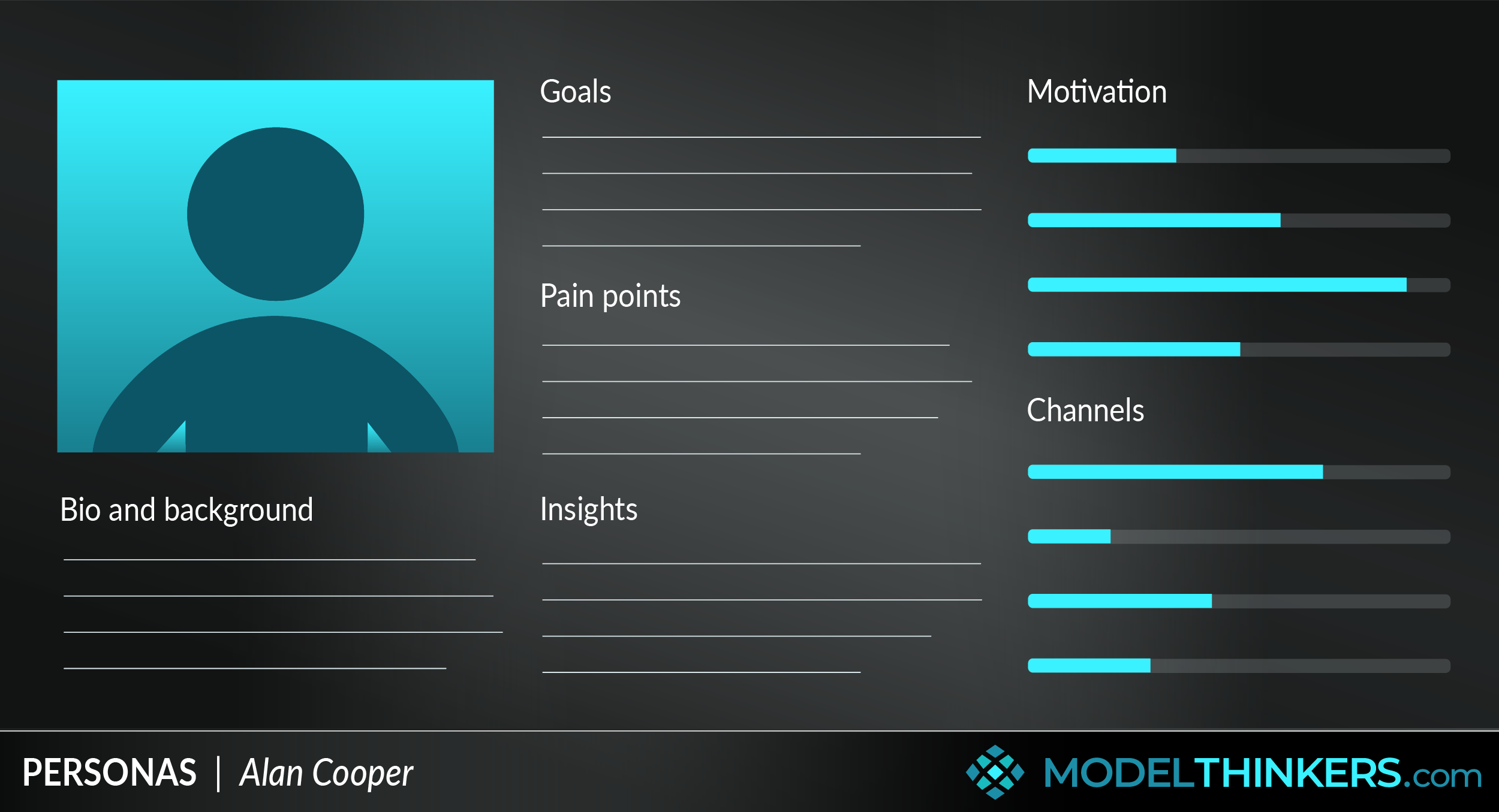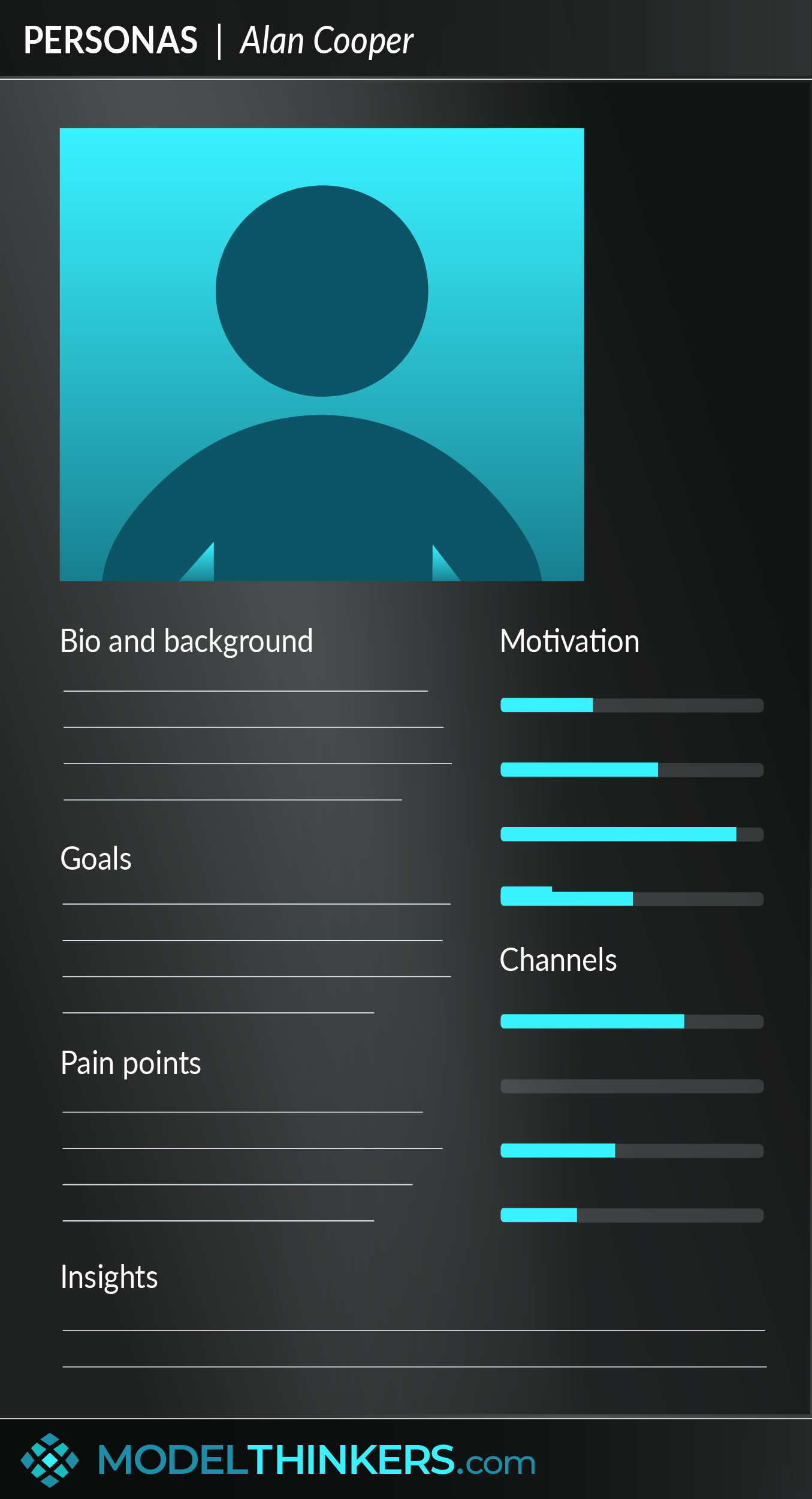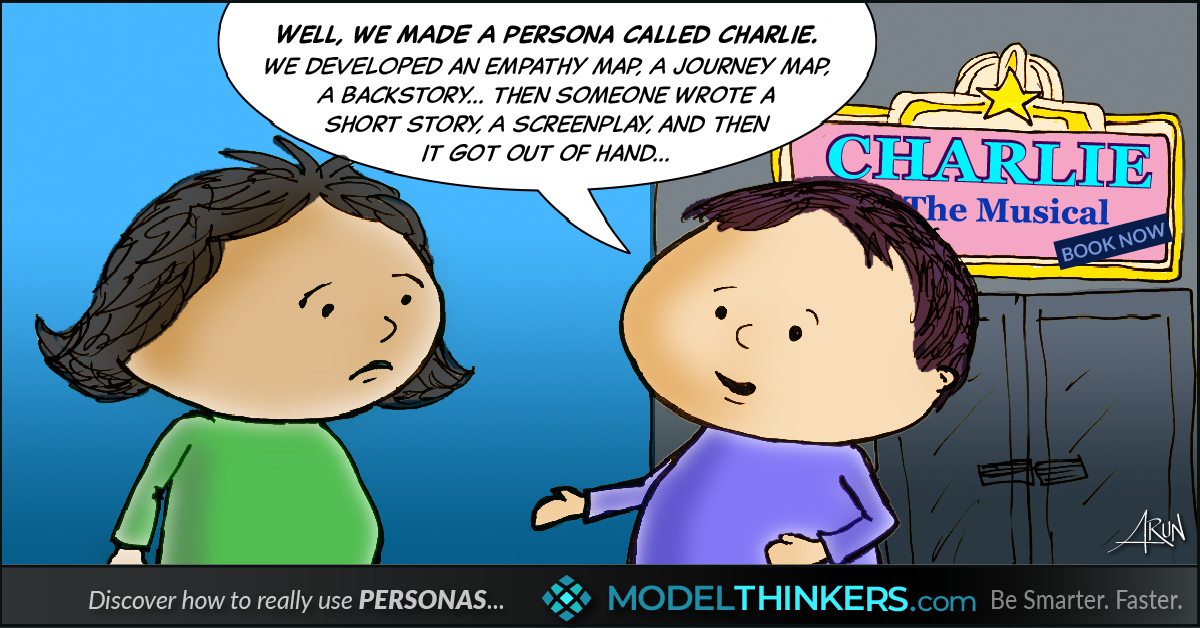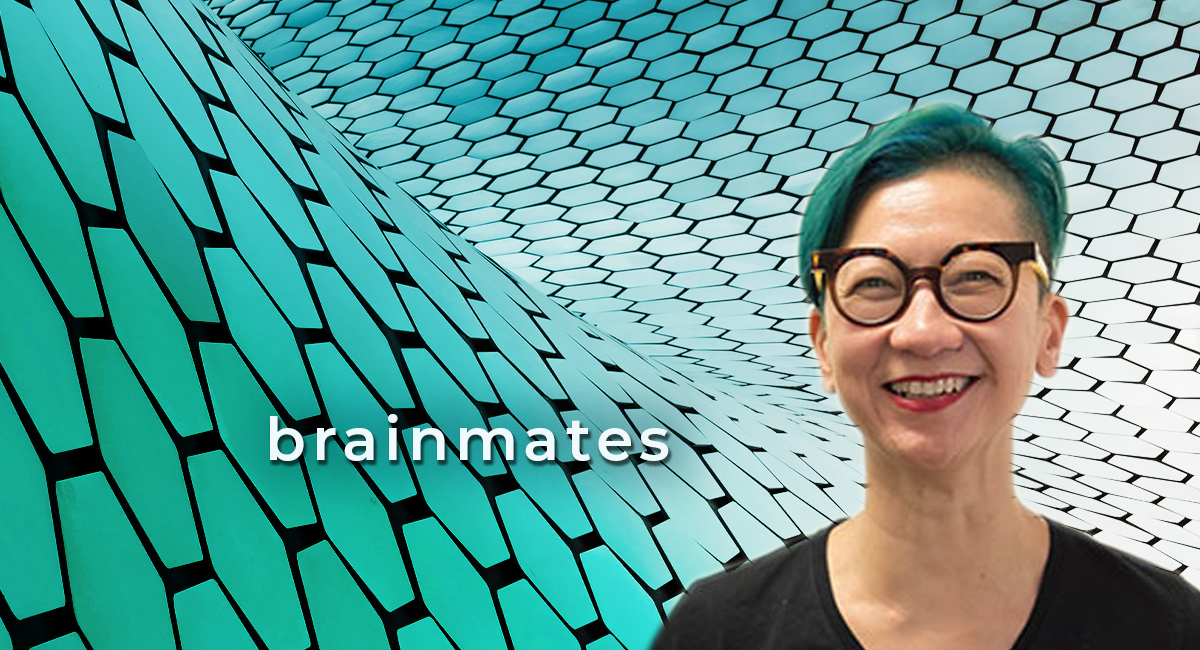

 0 saved
0 saved
 21.9K views
21.9K views








"A single death is a tragedy; a million deaths is a statistic." That brutal quote is generally attributed to Joseph Stalin, and points to a harsh truth about humanity – we tend to empathise more with specific individuals over generic groups of people. And that's where Personas can help.
Personas are fictional characters who allow you to design and plan from a place of deeper empathy.
MENTAL MODELS APPLIED TO PEOPLE.
Think of it this way — just as Mental Models are simplified representations of the world, Personas are simplified representations of people. They provide a 'snapshot' into a particular segment or type of user. Which means you'll better be able to appreciate their perspective, context, goals, pain and needs — to 'see the world from their perspective'.
PERSONA GENERATION.
A Persona is generally built from two main data approaches:
- Qualitative data, including user observation, user interviews and even generated by engaging the audience in co-design Design Thinking sessions.
- Quantitative data, including tracking user activity and analysing survey data.
They are generally captured in visual persona sheets (see the template below)
PERSONA APPLICATION.
Personas are often used as an ongoing quick reference point to maintain empathy throughout a design process, and are used in the design world, especially in UX, marketing, customer and employee experience.
IN YOUR LATTICEWORK.
Personas are typically applied as part of a Design Thinking process and are strong combinations with Empathy Maps and Journey Maps.
They have some challenges, see Limitations below, and an alternative approach that might be considered in some situations is the Jobs to be Done Framework.
AND, JUST FOR FUN...





- Start with your user data.
Explore and analyse your user data to try to identify patterns and potentially useful segmentation options. This might include usage data, surveys, or broader statistical data. Consider your end goals and which segments are most valuable in achieving the desired outcome to hone into particular data sets.
- Conduct user interviews to identify underlying needs and insights.
Interview your users or potential target audience. A typical approach involves using ‘empathy interviews’, asking users ‘tell me about a time when’ questions rather than what they want. Asking what they want tends to focus on existing solutions, the focus on stories and experiences can better expose pain points, goals and insights. Follow up each question with more ‘why’ questions to dig deeper.
- Gather quantitative and qualitative data and identify patterns.
Bring together the data you’ve collected from user analysis and interviews to identify patterns and opportunities. A typical approach to this involves a card sort activity - capturing key data points on separate cards which can be organised to uncover themes and connections.
- Develop summarised, graphical personas.
Use the patterns and insights you’ve uncovered to generate several personas. Often projects will use 3 to 5 personas as a base for a design process. Use a template like the one provided to capture key elements to make them visual and convenient for team members to reference.
- Use the personas as part of the process.
Using the personas means ideating to solve problems for them, testing ideas against their needs and expectations, and even imagining an experience from their perspective. Personas are ultimately a tool for you and your teams to step into the shoes of your target audience and consider it from their perspective.
- Test it with real users.
Remember that personas are simplified generalisations, like mental models. And, like mental models, ‘all of them are wrong, but some of them are useful’. Use personas as a dynamic and convenient short cut during a process and know that ultimately you need to test your ideas with the complexity and diversity of real users.
As simplistic and generalised representations of a user group, it has been argued that personas are prone to cognitive bias and simplistic solutions. For example, a persona who is a single mother might quickly have a set of assumptions imposed on her that might not reflect real user experiences. Some practitioners avoid gender, age and ethnicity —unless they are explicitly relevant — for this very reason.
Beyond that, they can be used as a substitute for actual ongoing engagement with a user group. With teams overly relying on the more convenient summaries rather than talking to actual users on a regular basis.
Meanwhile, the jobs to be done model proposes an alternative approach, arguing that rather than focusing on individuals, it's more important to understand the situation, motivation and desired outcome of users.
Teena the teenager.
Teenage focused magazine Seventeen was an early proponent of personas, starting customer research soon after its 1944 launch. They developed a persona called ‘Teena’ and used the character to sell ad-space to advertisers unfamiliar with this market.
Personas are part of a user centered design kit for marketers, product designers of any experience design.
Use the following examples of connected and complementary models to weave personas into your broader latticework of mental models. Alternatively, discover your own connections by exploring the category list above.
Connected models:
- Jobs to be done: proposing a situational, motivation and outcome lens over a user lens as the key factor, though perhaps its more useful to combine these models rather than counterpose them.
- Design thinking: personas are a common part of a design thinking process and toolkit.
- Journey map: personas can be mapped across experiences with this useful tool.
- Empathy map: a strong tool when used in conjunction with personas.
Complementary models:
- Pareto principle: in choosing persona segments and characteristics, consider who best represents the ‘20%’ that will get you ‘80%’ of your results?
- Innovation adoption curve: consider interviews with the extremes of the adoption curve, as those users might be more sensitive to their needs and help uncover needs.
- Agile methodology: using iterative design approaches can constantly test persona assumptions and definitions.
Personas are also known as archetypes or pen portraits.
While the practice of using personas as a methodology predated their formal ‘invention’ (see the In Practice example of Seventeen magazine in 1944), personas were formally adopted by Alan Cooper, a software engineer, as early as 1983. He captured his thinking later, describing the use of personas important to avoid designing for ‘elastic users’, who bends and stretches based on the whims of the design team.
 My Notes
My Notes
Oops, That’s Members’ Only!
Fortunately, it only costs US$5/month to Join ModelThinkers and access everything so that you can rapidly discover, learn, and apply the world’s most powerful ideas.
ModelThinkers membership at a glance:






“Yeah, we hate pop ups too. But we wanted to let you know that, with ModelThinkers, we’re making it easier for you to adapt, innovate and create value. We hope you’ll join us and the growing community of ModelThinkers today.”


























































































